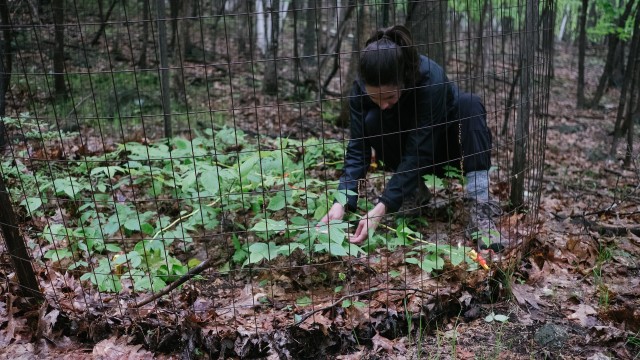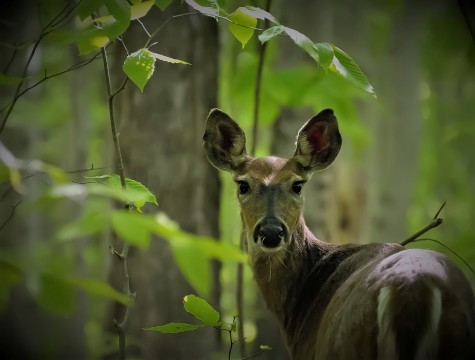Lyme disease is a tick-borne disease of growing concern in Quebec as the number of cases has risen exponentially since it was first reported here in 2008. The size of tick populations depends on various factors, including the presence of mammal hosts, habitat characteristics, and the environment. In southern Quebec, warmer winters are partly responsible for the increasing abundance of black-legged ticks. The overabundance of one of its main host species, the white-tailed deer, may also contribute to this heightened risk.
This is what Kari Hollett, a Master’s student in Biology supervised by Dr. Virginie Millien, is interested in. Her project, one of the five selected for the 2022 Gault Research Awards, aims to better understand how tick populations are impacted by humans interacting with wildlife in nature, such as the deer in the Reserve. Her research will contribute to management strategies designed around minimizing disease risk in the Gault Nature Reserve and beyond.
Gault Nature Reserve: A natural choice
Mont Saint-Hilaire, where the Gault Nature Reserve is located, is a very popular hiking destination drawing visitors from all over the Greater Montreal region. Over the past decades, it has also grappled with increasingly large white-tailed deer populations. The presence of visitors and deer in high numbers within the Reserve might affect the habitat quality as well as the distribution and density of the tick population. Ultimately, this could impact the disease risk for hikers using the trails.
“Conducting this research at the Gault Nature Reserve has been especially exciting. The reserve is separated into two distinct areas, the public and preservation sectors, each having varying degrees of human presence. This creates a unique natural experiment system that adds another layer to my research.” explains Kari.
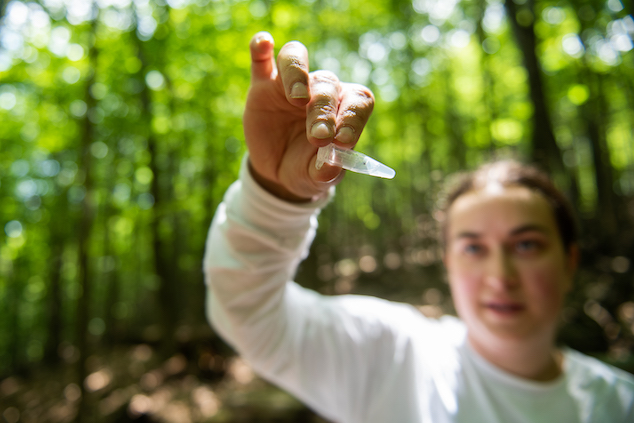
Kari Hollett holds a black-legged tick she just collected, preserved in ethanol (photo: Alex Tran)
Isolating what drives tick abundance
This project spans 16 sites, equally distributed between Gault's public and preservation sectors. Each site has a structure known as a “deer exclosure”. These exclosures are fenced areas, 2 meters in diameter, that prevent deer from accessing the plants inside. Compared to an unprotected control area of the same size, they allow scientists to evaluate the browsing pressure of deer.
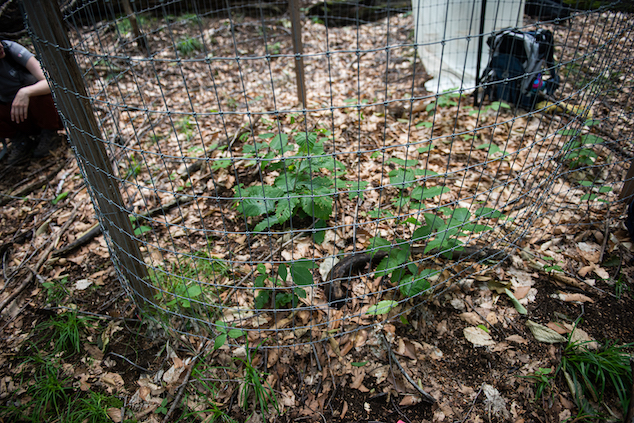
One of the deer exclosures used by Kari Hollett in her research (photo: Alex Tran)
To consider the complex interactions of deer and humans on the landscape, the research team used various tools to collect data about each site. First, they installed camera traps to characterize deer distribution across space and time. They also considered the foot traffic of the closest trail to each site.
Every month, from May to October, the researchers conducted vegetation surveys to assess the habitat quality (i.e., how suitable it is to a black-legged tick). These surveys included measuring and identifying all the plants within each exclosure and the associated control areas. They also collected the black-legged ticks themselves.
How exactly do you catch a tick?
To collect ticks in the field, the scientists used a method called tick dragging, performed both inside and outside the exclosure at each site. This involved dragging a sheet of white flannel, attached to a rope handle, across the ground. The flannel imitates mammal fur running across the ground, causing ticks to attach to the fabric as it passes. The model used for this experiment even produced heat and CO2, two of the factors helping ticks detect animal hosts.
They would then meticulously check the sheet for ticks every few steps. The white fabric makes spotting the black ticks on the sheets much easier, and the help is welcomed! Larval black-legged ticks are roughly the size of a poppy seed. Once they found a tick, they carefully placed it in ethanol using tweezers to bring it back to the laboratory.
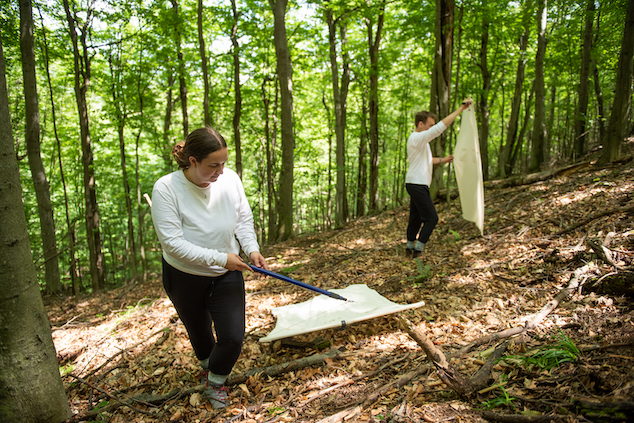
Kari Hollett and her field assistant Cody Milligan "tick dragging" (photo: Alex Tran)
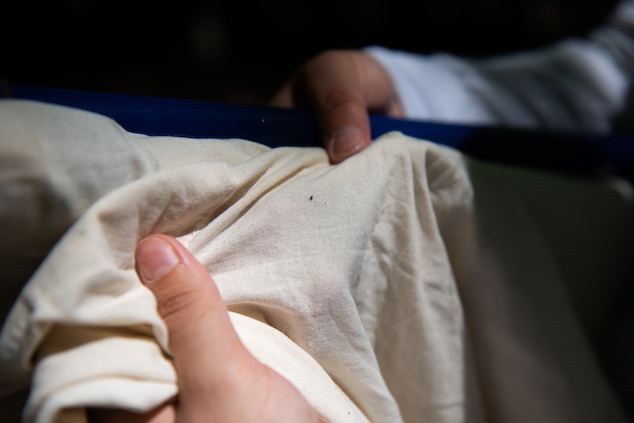
Since ticks are black, the white fabric makes spotting ticks on the sheets much easier (photo: Alex Tran)
Greater implications of this project
"This research is important as it integrates many elements of the Gault Nature Reserve – humans, deer, plants, and ticks. This project will help us understand how these factors interact and ultimately contribute to management strategies to minimize disease risk in the Gault Nature Reserve and beyond." explains Kari.
About the researcher
Kari Hollett was raised in Ontario. Besides research, she is passionate about conservation and environmental issues, outdoor activities, and reading. Her goal is to work in a setting where she can apply her enthusiasm for biology to current world problems through research.

Kari Hollett (photo: Alex Tran)
Note: Although no cases of Lyme disease have been declared at Gault Nature Reserve so far, black-legged ticks are present, and we encourage you to take measures to protect yourself when out in nature. Learn more about our 5 Anti-Tick Tactics
Header: The black-legged tick (Ixodes scapularis) can transmit the virus responsible for Lyme disease to humans and pets. (photo: Alex Tran)

